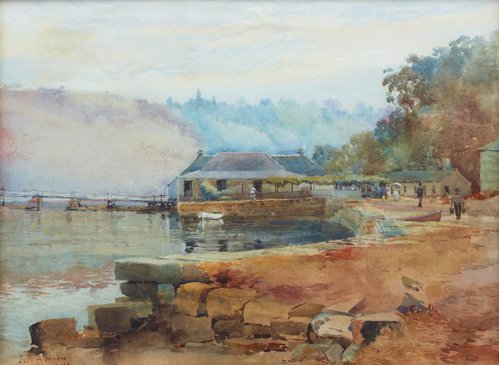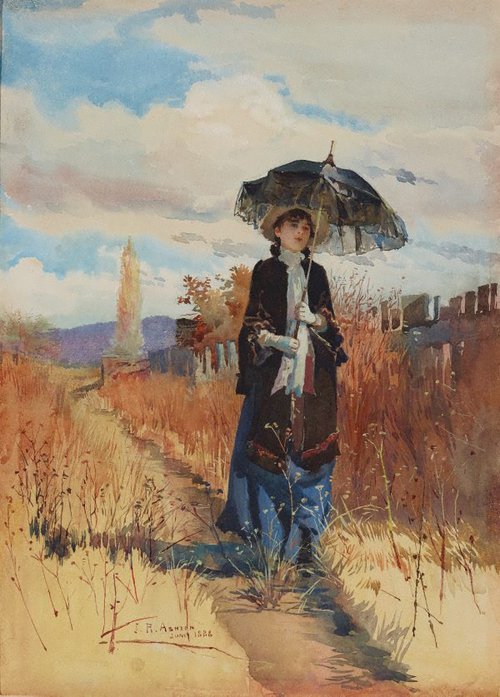Title
(Richard Buttong, Coolangatta)
1895
Artist
-
Details
- Date
- 1895
- Media category
- Watercolour
- Materials used
- pencil, watercolour on paper
- Dimensions
- 36.8 x 29.6 cm sight; 54.0 x 47.0 cm frame
- Signature & date
Signed and dated l.r., pencil 'Julian Ashton/ [1898? / 1895? illeg.]’.
- Credit
- Donated through the Australian Government's Cultural Gifts Program by Joanna Jenkins 2020
- Location
- South Building, ground level, Grand Courts
- Accession number
- 174.2020
- Copyright
- Artist information
-
Julian Ashton
Works in the collection
- Share
-
-
About
This watercolour portrait is of Richard Buttong, an Aboriginal man from the Shoalhaven region of New South Wales. It was commissioned by the Berry family from the esteemed Sydney painter Julian Ashton.
Richard Buttong lived near, and possibly worked at, the Coolangatta estate in the Shoalhaven, established by Alexander Berry in 1822 as the first land grant in the region. Mr Buttong was first recorded in the blanket returns for Coolangatta estate in 1834 and subsequent years thereafter. The commission by an artist of the renown of Ashton would suggest both the establishment status of the Berry family but also the regard they held for Mr Buttong, and his place in the community.
Ashton has depicted Mr Buttong wearing his gorget or ‘breastplate’ (also sometimes referred to as Aboriginal ‘king plates’), a tangible form of cross-cultural regalia that was used predominantly pre-Federation by colonists to recognise Aboriginal people who they perceived to hold positions of seniority and often, to incentivise the recipient to encourage good behaviour amongst their kin. The history of Aboriginal breastplates has its origins in European military dress. Originally part of medieval suits of armour, by the 19th century the gorget was in ornamental use only to indicate the rank of officers, and was discontinued by the British military via a decree by King William IV in 1830.
Mr Buttong’s breastplate endures and was last shown alongside 184 others, representing a wide network of Aboriginal warriors and negotiators, in the 1993 exhibition ‘Poignant Regalia: 19th Century Aboriginal Breastplates and Images’ at the Hyde Park Barracks. The exhibition was produced to coincide with the 1993 International Year for the World’s Indigenous People and brought together the 185 objects from public, regional, and private collections.
In the present, this system of awarding breastplates can be critiqued as flawed. While colonists sought to construct and impress upon Aboriginal people a social system that aligned with British hierarchies, they altogether ignored the shared leadership style and collective decision-making methodologies that exist within Aboriginal epistemologies. They are, however, rare evidence of named individuals which is helpful for family history research, native title, and linking individuals to locations across Australia.




